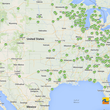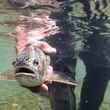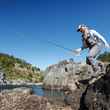It is possible that you are tired of hearing about Pebble Mine, tired of spreading the word about the importance of the world's greatest salmon fishery and asking others to do the same. It is also possible that you stopped paying attention back in July when the EPA proposed restrictions that would presumably block development of a large scale mine at the Pebble deposit. But the fight to protect Bristol Bay isn't over. Not yet.
The EPA proposed restrictions remain open for public comment until tomorrow (September 19) at 11:59 pm. The content of the almost 150,000 comments that have been received to date during this legally required comment period play an important role in whether the restrictions proposed by the EPA are ultimately approved and put in place.
While groups like Trout Unlimited, which has tirelessly advocated for Bristol Bay's protection, have repeatedly asked anglers and others to join the fight and make their voice heard, they're asking us all to do it one more time.




























